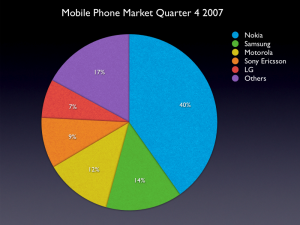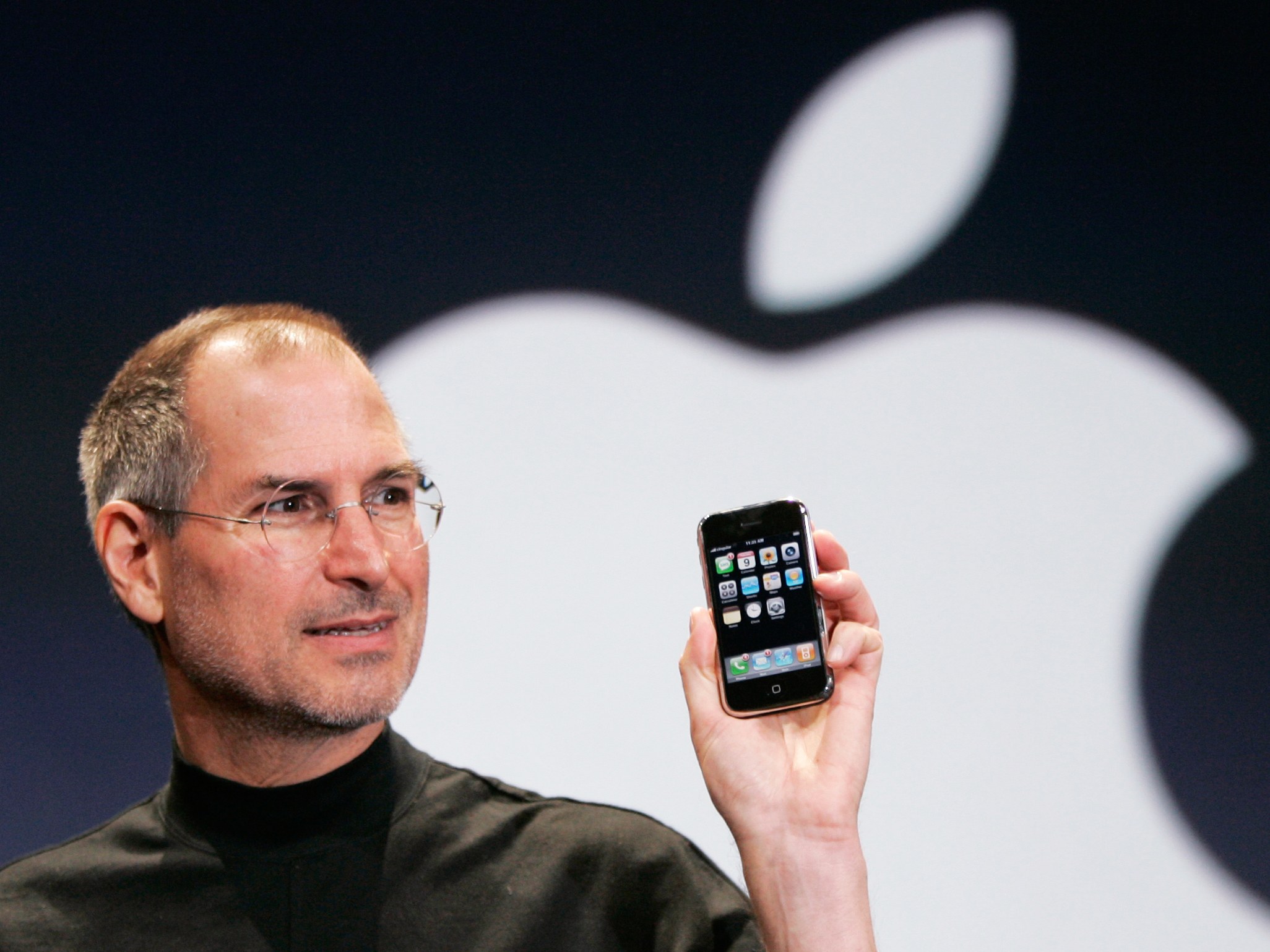In the year 2007, around half of the mobile phones sold in the world were Nokia phones. By all measures, Nokia was a massive company, and there was no indication that it would ever fail. That is until the iPhone came along. While Nokia technically did nothing wrong, it was their refusal to change and offer new things that led to their demise.

Source: http://statista.com
Nokia was a pioneer in the smartphone market, literally introducing consumers to the smartphone in 2002 its initial Symbian model. They had no trouble maintaining this leadership position for the next five years. Nokia spent a lot of money in Research and Development, but ultimately their value proposition remained the same throughout the years. Nokia failed to realize that its competitive advantage was short-lived. It failed to make use of Transient Advantages, which as we learned in COMM 101’s Strategy Class, focuses on innovation strategies that continually build new advantages.
And that is where the iPhone comes in.

Image Source: www.wired.com/story/iphone
Steve Jobs made this great smartphone that did not even have a keyboard. Not only that, he made buying apps so easy that people would actually buy them, making smartphones more useful than they were at the time. We learned in COMM 101 Strategy’s class that a value proposition is the most important element in a business, as it defines all the other aspect of the business. While looking at iPhone’s value proposition, which offered more gain to customers, it is easy to see what Apple did right.
Nokia has not been the only massive company to fail due to failure to keep up with market trends. Sears, a massive retailer, has lost its competitive advantage to companies that continue to modify their value propositions and deliver new gains to their customers. It failed to adapt to market trends such as online shopping. As such, it has lost its competitive advantage, along with its market share, to retailers like Amazon and Walmart, who continue to make use of McGrath’s transient advantages through continuous innovation in the industry. In reference to Ali Cervienka’s blog, I agree with Ali that should Sears have established an online presence sooner, they would still be leaders in the retail industry. I also agree with Ali about her opinion on Value Proposition, and the fact that the company failed for it did not keep up with what consumers actually wanted.
I think that companies should continue to use McGrath’s Transient Advantages as there is nothing like a sustained competitive advantage, and continue to modify their value propositions in order to continue creating value for their customers. It is clear to me that those who fail to learn, improve and grow become redundant and irrelevant to the industry.
Word Count: 450
